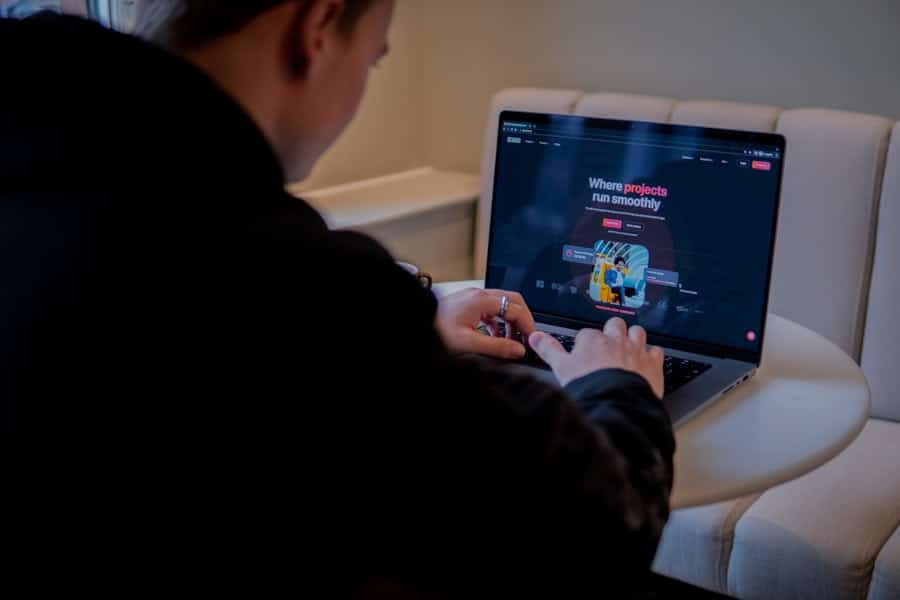In recent years, the gaming industry has witnessed a significant shift towards player-led game development platforms. These platforms empower gamers not only to play but also to create, modify, and share their own gaming experiences. This democratization of game development has been fueled by advancements in technology, particularly in user-friendly game engines and tools that allow individuals with little to no programming experience to bring their ideas to life.
Platforms such as Roblox, Dreams, and Fortnite Creative have emerged as frontrunners in this movement, enabling players to design intricate worlds, characters, and gameplay mechanics that can be shared with a global audience. The rise of these platforms can be attributed to several factors. First, the increasing accessibility of game development tools has lowered the barrier to entry for aspiring creators.
With intuitive interfaces and extensive tutorials, even those without formal training can engage in game design. Second, the growing popularity of streaming and content creation has fostered a culture where players are not just consumers but also contributors. Gamers are eager to showcase their creativity and share their unique visions with others, leading to a vibrant ecosystem of user-generated content that enriches the gaming landscape.
Key Takeaways
- Player-led game development platforms are on the rise, allowing users to create and share their own games.
- User-generated content has a significant impact on game development, providing a wide variety of experiences for players.
- Community plays a crucial role in player-led game development platforms, fostering collaboration and support among users.
- There is potential for monetization and revenue sharing in player-led game development, offering opportunities for creators to earn from their work.
- Independent developers face both challenges and opportunities in player-led platforms, including competition and the ability to reach a wider audience.
The Impact of User-Generated Content on Game Development
User-generated content (UGC) has fundamentally transformed the way games are developed and experienced. Traditionally, game development was a linear process controlled by studios and publishers, where a select group of developers dictated the gaming experience. However, with the advent of player-led platforms, this paradigm has shifted dramatically.
UGC allows players to contribute their ideas, designs, and narratives, resulting in a more diverse array of gaming experiences that reflect the interests and creativity of a broader audience. One notable example is the success of Minecraft, which has become a cultural phenomenon largely due to its robust UGC ecosystem. Players have created everything from intricate architectural designs to complex mini-games within the Minecraft universe.
This not only extends the lifespan of the game but also fosters a sense of community among players who share their creations online. The impact of UGC is evident in how it encourages innovation; developers can draw inspiration from player creations, leading to new gameplay mechanics or narrative styles that might not have emerged in a traditional development environment.
The Role of Community in Player-Led Game Development Platforms

Community plays a pivotal role in the success and sustainability of player-led game development platforms. These communities serve as incubators for creativity, collaboration, and feedback, allowing creators to refine their ideas and improve their projects based on input from fellow gamers. The social aspect of these platforms fosters a sense of belonging among users, who often form friendships and partnerships while working on projects together.
This collaborative spirit is essential for driving innovation and ensuring that the content produced resonates with a wider audience. Moreover, community engagement is crucial for maintaining the health of these platforms.
Platforms like Roblox have built-in social features that allow users to follow creators, join groups, and participate in events, further enhancing community interaction. This interconnectedness not only enriches the gaming experience but also provides valuable networking opportunities for aspiring developers who may wish to pursue careers in the industry.
The Potential for Monetization and Revenue Sharing in Player-Led Game Development
One of the most enticing aspects of player-led game development platforms is the potential for monetization and revenue sharing. Many platforms have implemented systems that allow creators to earn money from their work, providing an incentive for high-quality content creation. For instance, Roblox offers a virtual currency called Robux that players can earn through their games or by selling in-game items.
This model not only rewards creators but also encourages them to invest time and effort into developing engaging experiences that attract players. The monetization potential extends beyond just direct sales; it also includes sponsorships, partnerships, and merchandise opportunities. Successful creators can leverage their popularity to collaborate with brands or even launch their own merchandise lines based on their game characters or themes.
This creates a sustainable ecosystem where both the platform and its creators benefit financially. However, navigating this landscape requires an understanding of market trends and player preferences, as well as effective marketing strategies to stand out in a crowded marketplace.
The Challenges and Opportunities for Independent Developers in Player-Led Platforms
While player-led game development platforms offer numerous opportunities for independent developers, they also present unique challenges. One significant hurdle is the sheer volume of content being produced on these platforms. With thousands of new games and experiences being created daily, it can be difficult for individual developers to gain visibility and attract an audience.
Standing out requires not only creativity but also strategic marketing efforts and an understanding of community dynamics. Additionally, independent developers may face challenges related to platform policies and monetization structures. Each platform has its own rules regarding content ownership, revenue sharing, and community guidelines, which can impact how developers approach their projects.
Navigating these policies can be daunting for newcomers who may not be familiar with the intricacies of platform governance. However, these challenges also present opportunities for innovation; developers who can effectively leverage community feedback and adapt to platform changes are often able to carve out successful niches within the ecosystem.
The Future of Collaboration and Co-Creation in Player-Led Game Development

The future of collaboration and co-creation in player-led game development looks promising as technology continues to evolve. Emerging tools such as virtual reality (VR) and augmented reality (AR) are set to enhance collaborative experiences by allowing creators to work together in immersive environments. These technologies could enable real-time collaboration across geographical boundaries, fostering a global community of developers who can share ideas and build together regardless of location.
Furthermore, advancements in artificial intelligence (AI) are likely to play a significant role in shaping the future of player-led development platforms. AI-driven tools could assist creators by automating certain aspects of game design or providing personalized recommendations based on player behavior. This could streamline the development process and allow creators to focus more on their creative vision rather than getting bogged down by technical details.
As these technologies mature, they will likely open up new avenues for collaboration and co-creation that we have yet to fully explore.
The Importance of Moderation and Quality Control in User-Generated Content
As user-generated content becomes increasingly prevalent in gaming, the importance of moderation and quality control cannot be overstated. With millions of players contributing content, ensuring that this material meets certain standards is essential for maintaining a positive user experience. Poorly designed or inappropriate content can detract from the overall enjoyment of a platform and may even drive players away.
Effective moderation strategies are crucial for addressing these challenges. Many platforms employ a combination of automated systems and human moderators to review content before it goes live. This dual approach helps filter out inappropriate material while also allowing for nuanced judgment regarding quality and creativity.
Additionally, fostering a culture of accountability within the community encourages players to report issues or provide constructive feedback on each other’s work. By prioritizing quality control, player-led platforms can create an environment where creativity thrives while ensuring that all users feel safe and respected.
The Evolution of Player-Led Game Development Platforms in the Gaming Industry
The evolution of player-led game development platforms marks a significant chapter in the history of the gaming industry. From early modding communities that allowed players to tweak existing games to sophisticated platforms that enable full-scale game creation, this evolution reflects broader trends in technology and culture. As gaming becomes more integrated into everyday life, the demand for personalized experiences continues to grow, driving innovation within these platforms.
Looking ahead, it is likely that player-led development will continue to shape the future of gaming in profound ways. As more players become creators, we can expect an influx of diverse narratives and gameplay styles that challenge traditional norms within the industry. This shift not only empowers individuals but also enriches the gaming landscape as a whole, paving the way for new genres and experiences that resonate with an increasingly diverse audience.
The ongoing evolution of these platforms will undoubtedly play a crucial role in defining what gaming means in the years to come.
In exploring the future of player-led game development platforms, it’s essential to consider the broader technological landscape that supports innovation and creativity. An interesting parallel can be drawn with the evolution of smartwatch applications, which similarly empower users to customize and enhance their experiences. For a deeper dive into how user-driven innovation is shaping technology, you might find the article on The Best Smartwatch Apps of 2023 insightful. This piece highlights how developers are increasingly focusing on user-centric design, a trend that is also evident in the realm of game development platforms.
FAQs
What are player-led game development platforms?
Player-led game development platforms are online platforms that allow players to create and develop their own games using pre-existing tools, assets, and resources. These platforms often provide a user-friendly interface and a variety of features to help users bring their game ideas to life.
How do player-led game development platforms work?
Player-led game development platforms typically provide users with access to a range of tools, such as game engines, asset libraries, and scripting languages, to create and customize their games. Users can then publish and share their games with others on the platform.
What are the benefits of player-led game development platforms?
Player-led game development platforms empower users to express their creativity, learn valuable skills, and gain experience in game development. These platforms also provide opportunities for collaboration, feedback, and community engagement.
What is the future of player-led game development platforms?
The future of player-led game development platforms is likely to involve advancements in technology, such as improved tools and resources, enhanced community features, and increased accessibility. These platforms may also continue to evolve as a popular avenue for indie game development and creative expression.

